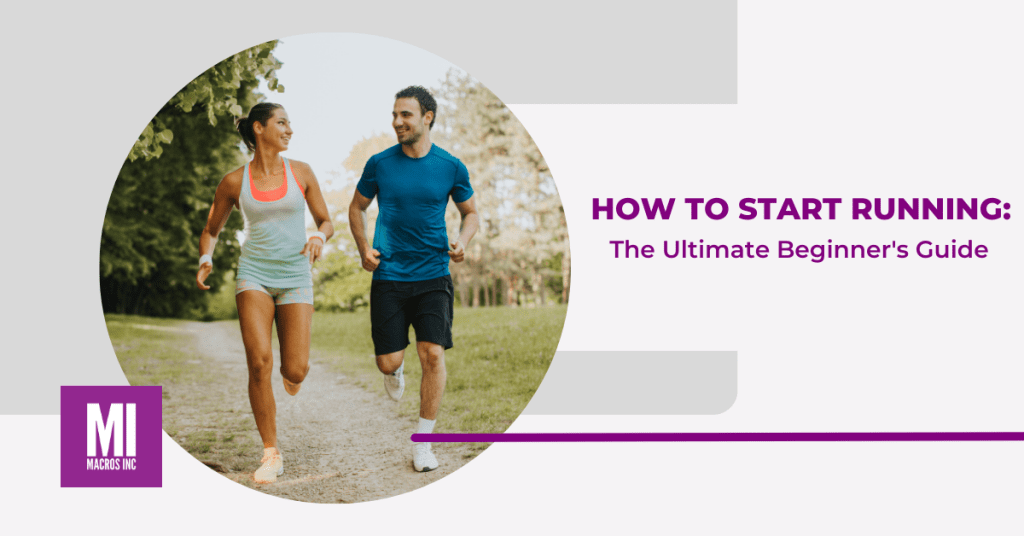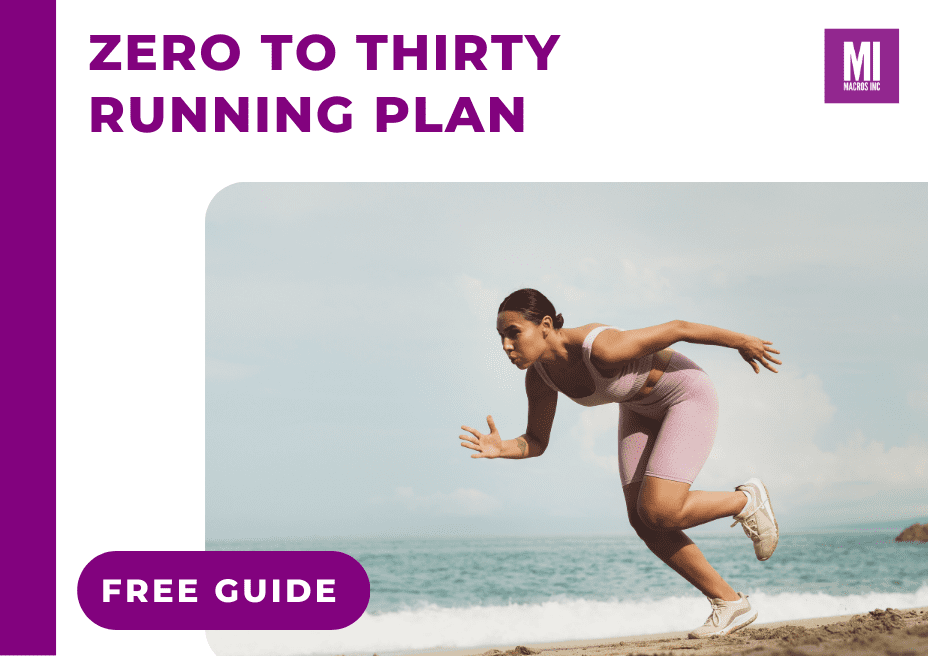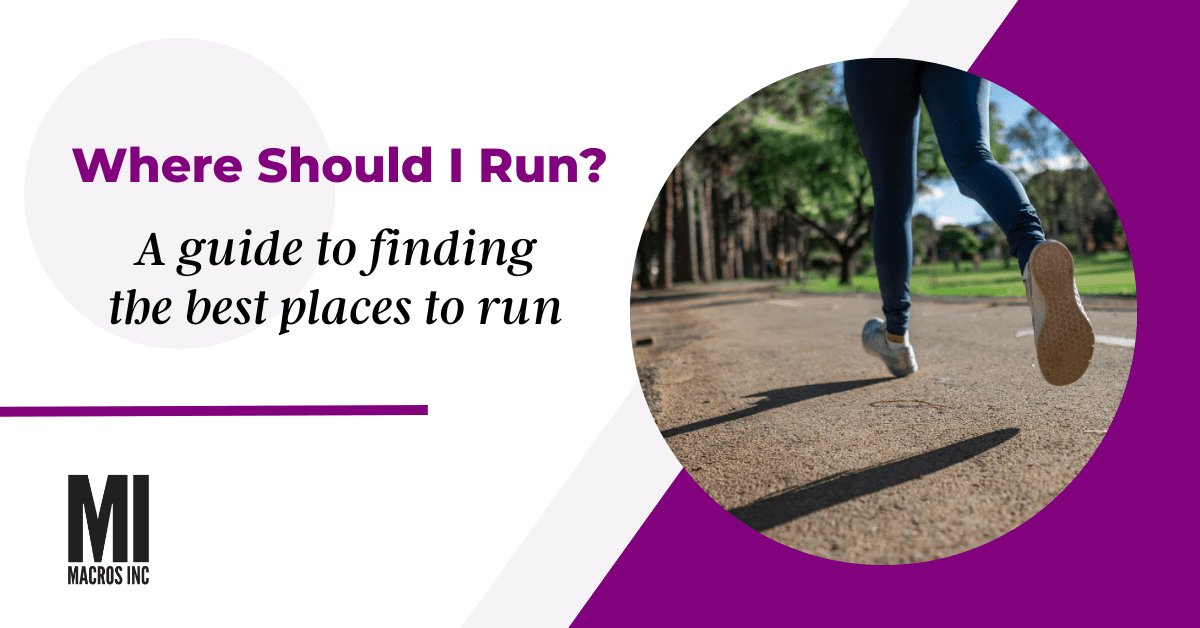How to start running: The Ultimate Beginner's Guide

How to Start running
We’ll go into the points in greater detail throughout the page but for now, the steps to follow to get started running are:
- Decide where you want to run! Depending on whether you’re happier on a treadmill, trail or tarmac, you’ll need to prepare for your preferred style of running. You’ll require different running gear on a hilly trail than an indoor treadmill.
- Make sure you have the right running shoes. It’s common for new runners to head out in old trainers without the appropriate support or cushioning and end up halting their progress with an injury. We’ve put together a how-to guide to help you choose the right running shoes for you, here.
- Follow a running plan that starts with run/walk intervals, or one that works for your goals and experience level. The running experts at MI have developed a Zero-to-Thirty running plan that safely builds to running 30 minutes in 9 weeks and ensures you build up your strength and stamina the right way.

Want to start running? Download our Zero-to-Thirty Running Plan today!
Running essentials
What Gear Do You Actually Need?
You may have heard the idea that all you need to be a runner is a pair of shoes. This is technically true, especially as you are getting started. But there are a few other things you might want to consider.

Running Shoes
Firstly, you will need shoes! A pair of running shoes that fit well and feel comfortable is best. If you have a local running store near you, we recommend going there to be fitted. They can watch you run to help you pick out a pair of shoes.
Often, you can try running in them on a store treadmill before you buy. The number of brands and shoe models in each brand can be overwhelming so it helps to have an expert’s guidance.
Running Clothing
You’ll also want some type of clothing that is appropriate for the temperature. In the summer, this could be a pair of socks, shorts, tank top, a sports bra if applicable and sunscreen. In the winter, you might need leggings, long sleeves, a jacket, hat and gloves.
You want clothing that is comfortable to move in and won’t cause chafing. That is a bad surprise when you get in the shower afterwards! Technical fabrics are often better than cotton at handling sweat without causing chafing.

Running Tracker
If you want to track your route or time your run/walk intervals, you’ll need an app or sports watch that does this.
There are several free apps that do this like MapMyRun and RunKeeper.
Watches like an Apple watch, FitBit and Garmin will also be able to track your route and time as well as program run/walk intervals.
Where Should I Run?
This is one of the best parts of running! You can run almost anywhere. Running allows you to explore and see new things you might not experience otherwise. You probably have a good idea of where you want to run.
A familiar spot is a good place to start. It might be outdoors on the road, trail or track. Or maybe indoors on a treadmill. If you are running outdoors, there are a few key safety tips to consider:
- Make sure there is plenty of room for pedestrians like a wide shoulder or sidewalk.
- Run facing oncoming traffic so you see them coming too.
- If it’s dark, stay in a well lit area and use lights and reflective gear to stay visible to traffic.
- Bring your phone in case of emergency.
- Stay alert and if listening to music, make sure you can hear your surroundings too.
- Consider running with a friend or letting someone know your planned route. Several apps have a live track option that will allow another person to see your location during your run.
Pavement
Paved surfaces are the most common places to run. If there is a sidewalk or paved path, those are the safest options because they are designed for pedestrians.
If you are running on the shoulder of the road, there are some safety considerations to keep in mind. Wearing bright or reflective clothing will help you to be seen.
And facing traffic as you run will allow you to see oncoming traffic. You’ll want to pick roads with a wide shoulder so there is plenty of room to move to the side if needed. And stay alert to your surroundings.
Pavement is a harder surface to run on which allows you to push off the ground harder to run faster. But it may be a little harder on your joints.
Picking a shoe with enough cushion and following a program to increase distance gradually helps manage the extra impact.
Gravel
The size of the gravel makes a big difference in how running on this surface feels. Small gravel can be a soft surface to run on, especially when it is a path intended for pedestrians or a gravel road.
Larger gravel adds more challenge because the body has to work harder to stabilize. All of the muscles of the lower leg and ankle are used a lot more running on an uneven surface compared to a flat surface.
Dirt or Grass
Dirt and grass are arguably the softest, easiest surfaces to run on for the joints. Either of these surfaces will absorb shock more than pavement. The thing to watch for is obstacles that can be a tripping hazard.
On dirt trails, you may find roots, rocks, mud, or holes along the way to watch for. And with grass, you may have the same obstacles but they can be hidden depending on the height of the grass.
Trail
There is a huge range of trail types from flat, groomed trails to technical mountain trails. If you are running a trail race, training on trails will prepare you for race day.
Knowing what to expect for the trail you are running is key for preparation because there is such a wide range of trail conditions. You may need trail shoes if the trail is more technical or specific safety equipment.
On trails, you’ll find similar obstacles to dirt like roots, rocks, water, mud, downed trees, steep hills, or even animals in some locations.
Track
You may have a school nearby with a track that you can run on. Some schools allow the public to use their track and some do not, so it’s best to call and ask if and when the track is open for public use.
Track surfaces can also vary between cinder, asphalt or polyurethane. Synthetic track surfaces like polyurethane are soft surfaces that absorb impact and cinder or asphalt are harder surfaces.
Treadmill
If you have access to a treadmill, it is very convenient to be able to run anytime you want, no matter the weather outside. Most treadmills are cushioned, so it is easier on the joints than running on pavement.
It can also be safer without traffic or tripping hazards to navigate. And it allows you to control your pace a little easier than running outside. The downside of a treadmill is that most people find it boring compared to being outside. And there is little variation in how your foot hits the ground or side to side movement which you do get running outside.
As you are starting out, it’s great to try out different places to run and see what you like. That will help you find what works best for you and to stay consistent with your training.
If you are training for a race, it’s always a good idea to train on a similar surface to the race. But you can add in some other surfaces based on your needs and wants. And as you try out some new places, you may discover another side to running that you love!
Get more from your training with a dedicated nutrition and fitness coach

We’ve helped over 25,000 clients tailor their nutrition and training to achieve their dream results. Simply fill out the form below and one of our team will be in touch!
how to start running
So what’s next, just go out and run and see how far I can go? It is important that every runner increases their time or distance gradually.
It is too common to see a new runner excited to go out and see what they can do. And then unfortunately end up injured or burned out because they did too much, too soon.
Follow a Running Plan
It is best to follow a program that starts with run/walk intervals. We’ve put together this Zero to Thirty Running Plan to help you get started and safely build to running 30 minutes in 9 weeks.
This program will give you some structure so you don’t increase too quickly. And gives your body time to adjust to the extra stress that running puts on it. Your first week might be intervals of 1 minute running repeated a few times.
And you’ll build from there. As you go through the plan, if you need to repeat a week, do it. The primary goal is to build at the rate where your body stays happy.
You may find that sticking with run/walk intervals in the long term works best for you. This is a strategy that a lot of runners use to reduce the stress on the body or because they find it more enjoyable.
If you are running at all, you are a runner. It doesn’t matter how much or how fast.
How Many Days A Week Should I Run?
When you are just starting out, targeting 2-3 days a week to run is enough. You want to run often enough to help it become a habit. And often enough for your body to benefit from the exercise.
In our Zero to Thirty guide, we have the plan set up for 3 days of running and some days for cross training. Cross training is an opportunity to do something else that will still support your fitness, but not be as high impact as running.
A lot of runners stick with 3 days of running each week. If you are planning to run a race, you can finish just about any race distance on 3 days of training in a week. It allows you to stay fit and still have time for recovery or other types of workouts you enjoy doing.
If you do want to run more often, it is something that you can add gradually as you get some experience.
Once you have completed the Zero to Thirty program and are comfortable with running 30 minutes three days a week, you can start to think about adding in a fourth day. And just like you did to get started, you can start with run/walk intervals and build from there.
Running Nutrition: What To Eat Before A Run
What you eat before a run will depend on what time of day you are running, and for how long. If you run first thing in the morning, you may want to eat a small carbohydrate snack before your run.
Something like toast and jam or a banana would be quick to digest and give you some energy for your run.
If you are running later in the day after you’ve already eaten something, you don’t need to eat anything extra for a run less than about 75 minutes. If you are running longer than 75 minutes, you can add in a snack ahead of time, or ensure that your last meal was within 2 hours of when you are running.
Carbohydrates are the best fuel for running, so your meal or snack should have some carbohydrate. If your GI system is more sensitive, you may want to avoid anything with too much fiber or fats because that increases the chance of GI distress.
If you are running longer than about 75 minutes, you can learn about fueling during your run here. Sometimes this takes a little trial and error to find what works best for you, so don’t be afraid to experiment along the way!
Will Running Help Me Lose Weight?
Running has tremendous benefits for your heart, circulatory and musculoskeletal system and has been shown to have positive effects on mood and mental wellbeing too.
Not only this, but it can be an excellent addition to your fitness routine to burn additional calories throughout your day.
Now, in an ideal world these extra calories burnt from exercise would tip the ‘Calories in Calories out’ scale further in the favor of calories out (more on that, here), leading to greater weight loss, however, this isn’t always the case.
Studies have shown that an increase in exercise often leads to an increase in appetite which can leave those who’ve taken up running to lose weight feeling demotivated about a lack of progress on the scale.
Whilst running can widen the gap between calories in and calories out, it’s more beneficial for the overall health benefits rather than for weight loss. To lose weight, it’s best to pay attention to the amount of calories you’re consuming.
It’s much, much easier to calculate & control your calorie intake than it is to calculate & control your calorie output.
How Many Calories Does Running Burn
It’s a tempting question to ask ourselves when starting any exercise, “How many calories will running burn?” and the very short answer is there is no way of accurately knowing.
But my Fitbit says…yes we know, but they’re not accurate.
But will it burn off enough for a donut? It might, it might not… it depends on lots of variables, your current fitness levels, your height, weight, gender, distance run, and of course the donut. How big is the donut? Does it have sprinkles? Does it have strawberry jelly? Mmmmm donuts…but we digress.
If weight loss is your goal, running can be an excellent exercise to combine alongside a calorie controlled diet. It has a multitude of benefits from increased cardiovascular function to improved mental wellbeing, but no exercise alone will drive weight loss.
But of course, you still want to hear the answer to exactly how many calories running burns. As we touched on before, the number of calories burned will depend on various factors such as body weight, pace and distance. As a general rule of thumb running burns around 100 calories per mile for a 150lb person. However this can vary depending on the individuals fitness levels, running style and body composition.
6 running tips to help you get started
Strength Train
It might be a little odd to find this at the top of the tips for running list. But it’s true, runners should do some form of strength training. It takes a lot of balance and control to run and maintain good posture.
The core is the center that keeps the spine stable as the arms and legs move. Strong hips, glutes and legs help push you forward. And a strong upper back and shoulders help keep those arms pumping.
It doesn’t take hours at the gym. But a few targeted exercises, a couple times a week is enough to support your running.
Build Up Distance Gradually
This is true for runners of all experience levels. Running is a stress on the body just like any other exercise. A boost in fitness comes because the body recovers and adapts from that training stress.
Too little stress and we don’t improve our fitness. Too much stress, and we break down more than we can build back up. The right amount of stress allows us to stay injury free and improve our fitness along the way.
A good rule of thumb is to increase time or distance by about 10% a week. With run/walk intervals, this could be increasing the running interval. Or it could look like adding a few extra minutes to each run across the week.
A structured approach to adding distance will help you stay in that middle ground between too little and too much.
Don’t Skip Recovery Days
You probably shouldn’t run every day, even if you want to! The number of days that you need for recovery is going to be an individual thing. It can depend on how long you’ve been running and how much of your training is low intensity.
If you notice that you are a bit more sore, feeling some little injuries popping up, are more tired or aren’t sleeping well, that is a sign you might need more recovery days.
Recovery days can be complete rest days. Or they can be active recovery which would focus on low intensity movement. An active recovery activity might be going out for an easy hike, walk, very easy spin or a yoga class.
Whatever that is for you, schedule it in and be proactive with your recovery. Your body will let you know if you’ve been missing it.
Fuel Appropriately
Running burns calories. That is what attracts a lot of people to start running in the first place! It’s good to understand what your body needs, or doesn’t need, in order to feel good in your runs.
For runs that take 75 minutes or less, you don’t need to add any extra fuel as long as your regular nutrition takes into account your exercise routine.
If you are running longer than 75 minutes, you can start to add fuel during your run based on the duration. The longer the run, the more calories you should take in during the run.
If you aren’t sure what your daily nutritional needs are with your running schedule, you can post for a macro check here in our Endurance specific FB group. We would be happy to help you set some macro targets for your specific goals!
Set A Goal
Having a goal can help put some structure and focus into your running. Whether it’s a race, setting a personal record (PR) for a distance or a certain distance you want to conquer.
Having that goal can give you some motivation and purpose to get the workouts done. And there is nothing better than the feeling of accomplishment when you achieve your running goal!
Have Fun!
Not everyone loves running. I get that. Some people run because they have to maintain fitness for their job or another sport they play. Some people run as a means to lose weight, even if they don’t really enjoy it.
It’s not often that someone starts running just because they want to be a runner. No matter why you’re here, you will probably stick around because you have found ways to make it fun. And maybe because you love how it makes you feel.
At times, training can start to feel less fun if we’ve neglected the things we love about running. It’s good from time to time to take a step back, and make sure you are still having fun with your running. Whether it’s leaving the watch at home or getting out to run a favorite route. Don’t forget to keep some fun in your running. You will know if it’s been too long.










